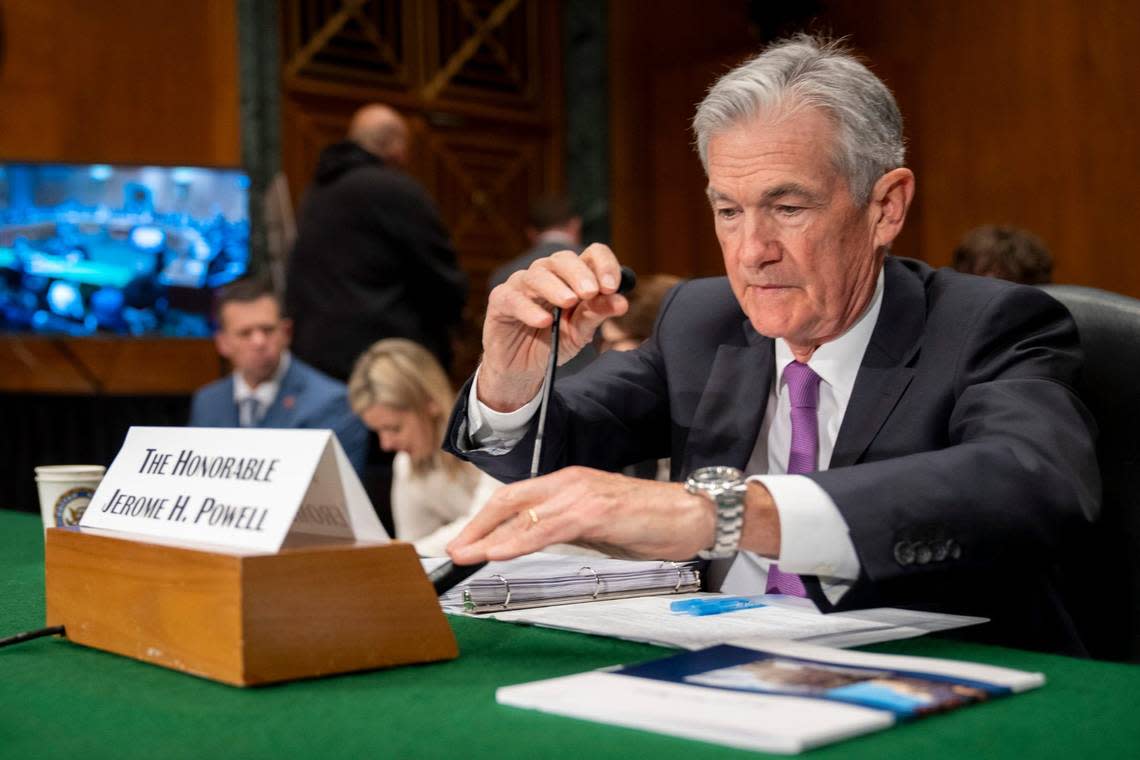The Fed keeps interest rates steady. What does that mean for California mortgages?

Waiting to see lending rates drop? Keep waiting. It’s unlikely to happen anytime soon, as the Federal Reserve on Wednesday said it would not lower its key interest rate now and suggested only one rate cut by the end of the year.
Fed action on interest rates is regarded as a key indicator of what consumers can expect as they buy homes, cars and other big-ticket items.
While the Fed could act at any time, it is next scheduled to consider rates at the end of July.
What all this means in California is that the state’s economy should continue to grow at a steady if unspectacular pace.
“While there are still challenges ahead — notably, state and local government finance, homelessness, and out-migration — the forces driving California’s economy remain robust,” said Jerry Nickelsburg, director of the UCLA Anderson forecast.
But getting a 30-year fixed-rate mortgage under 7% could be challenging, said Jacob Channel, senior economist at LendingTree, which tracks interest rates.
The Fed’s goal has been to get the rate of inflation down to a 2% annual rate. Higher interest rates are aimed at slowing demand, which in turn is supposed to motivate sellers to lower their prices in order to attract reluctant customers.
The Fed has raised its target rate 11 times starting in March 2022, but has not increased the rate since last July. Its target rate remains 5.25% to 5.00%.
The rate of inflation peaked at 9.1% in June 2022, but has since declined.
In California, prices increased at an average of 4% last year but are on pace for a 3.1% increase this year, according to this month’s UCLA Anderson economic forecast. The state rate is expected to slow to 2.7% next year and 2.4% in 2026.
The national rate, announced Wednesday, has been 3.3% for the past 12 months, but May’s seasonally adjusted rate was unchanged from the previous month. The Fed closely watches the pace of personal consumption expenditures, which rose 2.7% in the 12 months ending in March.
The Fed on Wednesday said in a statement that “the risks to achieving its employment and inflation goals have moved toward better balance over the past year.” But it added that “the economic outlook is uncertain, and the (Fed) remains highly attentive to inflation risks.”
It offered no solid hint of when it could adjust rates.
The Fed said it “does not expect it will be appropriate to reduce the target range until it has gained greater confidence that inflation is moving sustainably toward 2%.”
A thriving California economy
Whether or not lower interest rates could stoke an even stronger recovery is uncertain. While the state’s economy is doing well, and projected to remain fairly strong, housing affordability remains a problem.
LendingTree’s Channel explained the Fed can influence home mortgage rates but other factors are involved, as well, such as developments in the bond market.
Channel predicted, “Mortgage rates will likely continue to fluctuate, and it’s impossible to say for certain where they’ll end up.”
The mortgage lending rate on a 30-year fixed rate loan was 6.99% last week, according to Freddie Mac, which tracks rates. Over the past year, the rate has averaged 7.01%.
In California, year-to-date sales of existing single-family homes were up as of April. But while there were big gains in sales of homes priced at more than $1 million, sales of homes costing less than $500,000 dropped 8%.
“While the market performed solidly in April, we don’t expect to see a rapid recovery as long as inflation remains sticky and mortgage rates continue to fluctuate, despite recent dips,” said Jordan Levine, California Association of Realtors senior vice president and chief economist.
Levine saw housing supply increase, which he said “will provide much-needed supply to the market and facilitate a higher level of home sales in the second half of the year.”


